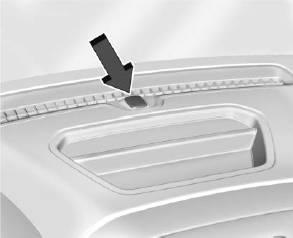Chevrolet Silverado: Driving Information / Loss of Control
Chevrolet Silverado 2019-2025 Owners Manual / Driving and Operating / Driving Information / Loss of Control
Skidding
There are three types of skids that correspond to the vehicle's three control systems:
- Braking Skid — wheels are not rolling.
- Steering or Cornering Skid — too much speed or steering in a curve causes tires to slip and lose cornering force.
- Acceleration Skid — too much throttle causes the driving wheels to spin.
Defensive drivers avoid most skids by taking reasonable care suited to existing conditions, and by not overdriving those conditions. But skids are always possible.
If the vehicle starts to slide, follow these suggestions:
- Ease your foot off the accelerator pedal and steer the way you want the vehicle to go. The vehicle may straighten out. Be ready for a second skid if it occurs.
- Slow down and adjust your driving according to weather conditions. Stopping distance can be longer and vehicle control can be affected when traction is reduced by water, snow, ice, gravel, or other material on the road. Learn to recognize warning clues — such as enough water, ice, or packed snow on the road to make a mirrored surface — and slow down when you have any doubt.
- Try to avoid sudden steering, acceleration, or braking, including reducing vehicle speed by shifting to a lower gear. Any sudden changes could cause the tires to slide.
Remember: Antilock brakes help avoid only the braking skid.
 Off-Road Recovery
Off-Road Recovery
The vehicle's right wheels can drop off the edge of a road onto the shoulder
while driving. Follow these tips:
Ease off the accelerator and then, if there is nothing in the way, steer
the vehicle so that it straddles the edge of the pavement...
 Off-Road Driving
Off-Road Driving
Four-wheel-drive vehicles can be used for off-road driving. Vehicles without
four-wheel drive and vehicles not equipped with All Terrain (AT) or On-Off Road
(OOR) tires must not be driven off-road except on a level, solid surface...
Other information:
Chevrolet Silverado 2019-2025 Owners Manual: Ignition Positions (Keyless Access)
Vehicles equipped with Keyless Access have pushbutton starting. The Remote Keyless Entry (RKE) transmitter must be in the vehicle for the system to operate. If the pushbutton start is not working, the vehicle may be near a strong radio antenna signal causing interference to the Keyless Access system...
Chevrolet Silverado 2019-2025 Owners Manual: Heated Steering Wheel
: If equipped, press to turn it on or off. A light next to the button displays when the feature is turned on. The steering wheel takes about three minutes to start heating. Remote Start Heated Steering Wheel If equipped with remote start, the heated steering wheel will turn on automatically during a remote start along with the heated seats when it is cold outside...
Categories
- Manuals Home
- 4th Generation Silverado Owners Manual
- 4th Generation Silverado Service Manual
- Electric Parking Brake
- Jump Starting
- Programming Transmitters to the Vehicle
- New on site
- Most important about car
Vehicle Alarm System

The indicator light, on the instrument panel near the windshield, indicates the status of the system.
Copyright © 2025 www.chsilverado.com
